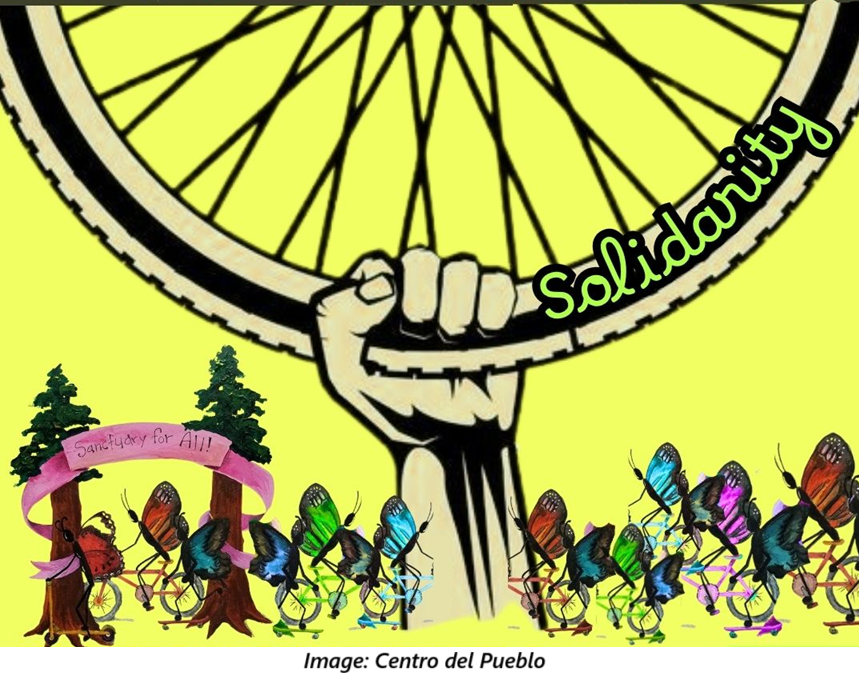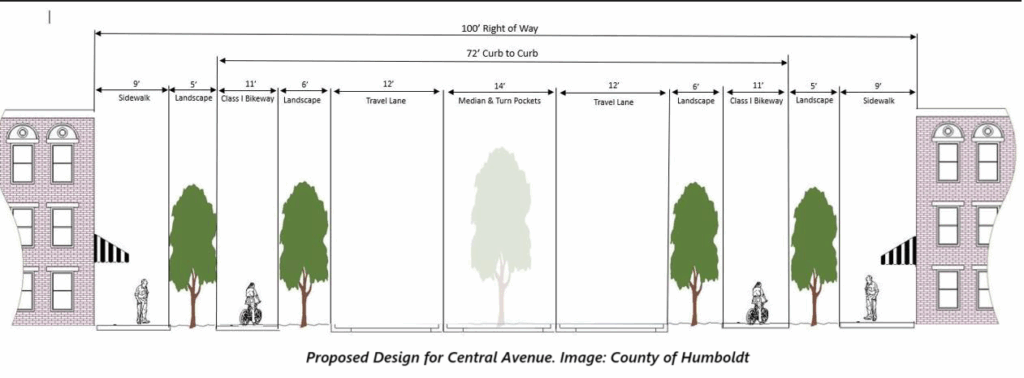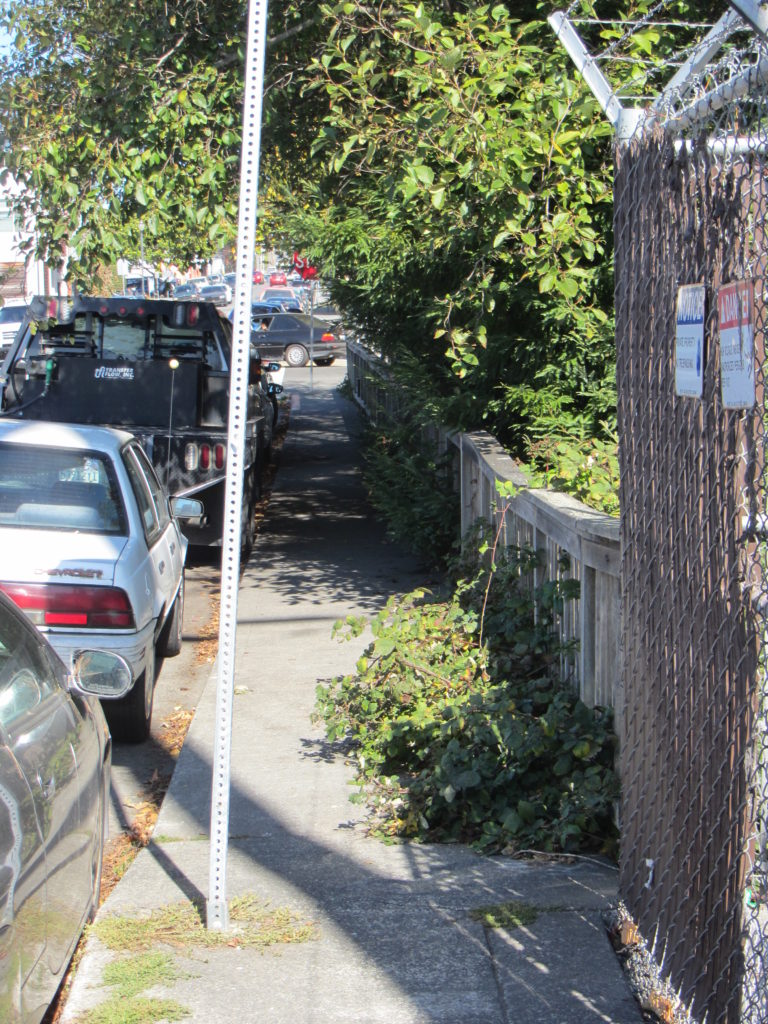The Collector
August 22, 2025
Justice on Wheels
Local advocacy group Centro del Pueblo is holding a Solidarity in Sanctuary Day on Saturday. According to Centro del Pueblo, the event “is a moment to lift up migrant voices through art, music, reflection, and unity” and “reaffirms that respect, diversity, and the protection of human rights are non-negotiable values.” Fittingly, the day will begin with a “Justice on Wheels” bike/skate/scooter event from Eureka to Arcata on the newly completed Humboldt Bay Trail, followed by activities at the Arcata Plaza and the Sanctuary Garden.
Less than two months since its completion, the Humboldt Bay Trail is quickly becoming not only a critical transportation corridor but also an important civic space for public speech and protest. Normally, when activists “take to the streets,” we are reminded that simply standing or walking in public can be powerful political acts, and that most of our public spaces are dominated by cars. We are inspired to see the creative civic uses enabled by a safer, more welcoming transportation corridor like the Bay Trail.
In Humboldt County, many of our important trails – both recreational and commuter – are largely maintained by volunteers. While CRTP believes that government agencies’ responsibility for road maintenance should extend to commuter trails as well, that is unfortunately not the current reality. If you want to help maintain the new Bay Trail or another trail in the county, you can email the Humboldt Trails Council at vtscoordinator@humtrails.org to sign up for their Volunteer Trail Stewards program.
Central Avenue Safety Upgrade Decision Expected Next Week
Next Wednesday, August 27th, at 6 pm, the McKinleyville Municipal Advisory Committee (MMAC) will hold what may be their last meeting on the Town Center ordinance (we’ve prematurely predicted the end of this process before, so this time we’re not making any promises). They are expected to vote on two key issues – one of which is the design of Central Avenue in the Town Center – before taking a final vote on the plan and its accompanying Environmental Impact Report. That means they’ll be deciding whether to affirm their previous decision to include a lane reduction and other bike/pedestrian safety upgrades for Central Avenue, or backtrack and keep all 5 vehicle lanes in place, preserving a big high-speed roadway at the expense of the future Town Center’s success (and the safety of local community members). CRTP will continue to advocate for a lane reduction and comfortable, safe, protected bike lanes on both sides of the street.
After the MMAC takes its final votes, the ordinance will move on to the Humboldt County Planning Commission and then the Board of Supervisors, who will have the final say. At a public workshop this Thursday, the Planning Commissioners were introduced to the ordinance and heard from many of its supporters, including CRTP. Commissioners indicated that they are likely to defer to the MMAC’s recommendations on most major issues out of respect for the long public process that led to this point, and we expect the Board of Supervisors to do the same. That means the meeting next week will be key to determining the final street designs and other aspects of the ordinance.
An Overgrown Bush Can Be a Huge Mobility Problem
As Cal Poly Humboldt professor Aaron Donaldson points out, people without disabilities often fail to recognize features of the built environment that create safety, access, and mobility problems for people with disabilities. Even when those problems are pointed out, people with the power to fix them often respond by minimizing, dismissing, or neglecting the issue.
At CRTP, we believe that transportation facilities and other public spaces must be designed to work everyone. As our vision statement says, we are passionate about creating a world where walking, biking, public transit, and other modes of transportation are equitable, safe and comfortable for people of all races, ethnicities, cultures, income levels, genders, ages and abilities. If you have experienced a hazardous location on a street or road, or a crash or near-miss, one small but important step is to report it on Street Story.
Official Safety Data Tell a Grim Story
In preparation for updating the statewide Strategic Highway Safety Plan, Caltrans has produced fact sheets summarizing fatalities and serious injuries from traffic crashes between 2013 and 2022 (the last year for which final, official statistics are available). Both statewide and in the “Northern Rural Region” that includes the North Coast, fatalities and serious injuries increased significantly over the decade. The trend holds for almost all types of crashes. For example, in the Northern Rural Region, serious bike crashes increased 14%, pedestrian crashes increased 21%, speeding & aggressive driving crashes increased 22%, and crashes at intersections increased 38% when compared to the previous decade.
Caltrans does not provide a good explanation for these devastating trends, but experts have suggested that similar trends nationwide are the result of many years of designing streets and roads for speed over safety, combined with ever-larger and more dangerous vehicles. The rise in distracted driving and other cultural changes may also play a role, but these factors are harder to document and study.
News from Beyond the North Coast
Caltrans Quick-Build Bill Needs Support
Caltrans has made some progress in recent yeras toward making its infrastructure safer for people walking, biking, and rolling. But there’s no doubt that the changes are too slow and the work that remains is enormous. A bill sponsored by CalBike would create a pilot quick-build program for Caltrans to encourage faster progress, and it needs your support.
California’s New Zero-Emission Vehicle Plan Falls Short
After the Trump administration attacked California’s long-standing zero-emission vehicle mandates earlier this year, the state Air Resources Board set to work developing alternative plans. Now they have released those new plans, and experts are disappointed by their lack of ambition. For those concerned about the climate crisis, it’s important to keep in mind that the more slowly zero-emission vehicles are adopted, the more carbon reduction efforts will have to rely on reducing the amount of driving we do overall.
Inadequate Physical Activity Costs the US Billions
A new study estimates that inadequate physical activity among American adults results in almost $200 billion in added healthcare costs each year. Walking, biking, and rolling for transportation are among the simplest and most reliable ways to meet physical activity standards.
The Collector is CRTP’s weekly transportation news roundup, published every Friday. We focus on North Coast news, but we also include relevant state, national and international transportation news – plus other items that we just find kind of interesting! To submit items for consideration, email colin@transportationpriorities.org.



